This former post office bears the name of the Staffordshire-born sculptor who designed the portrait of the queen which has appeared on postage stamps since 1967, along with the image of the queen’s head for the first decimal coins.
Photographs, prints and text about the Arnold Machin.
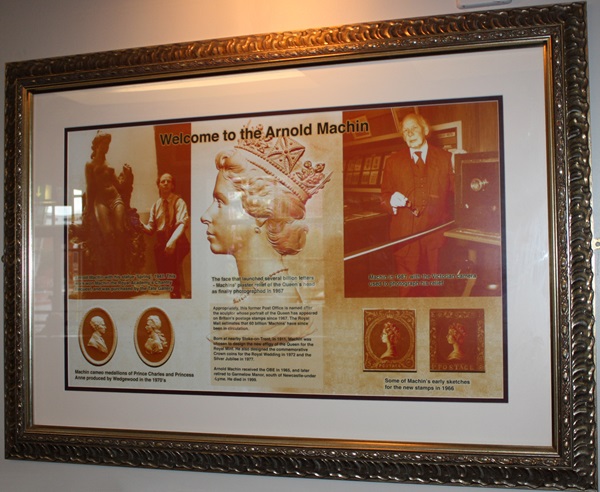
The text reads: Appropriately, this former Post Office is named after the sculptor whose portrait of the Queen has appeared on Britain’s postage stamps since 1967. The Royal Mail estimates that 60 billion ‘Machins’ have since been in circulation.
Born at nearby Stoke-on-Trent, in 1911, Machin was chosen to design the new effigy of the Queen for the Royal Mint. He also designed the commemorative Crown coins for the Royal Wedding in 1972 and the Silver Jubilee in 1977.
Arnold Machin received the OBE in 1965, and later retired to Garmelow Manor, south of Newcastle-under-Lyme. He died in 1999.
Top left: Arnold Machin with his statue ‘Spring’, 1947. This work won Machin the Royal Academy’s Chantry Bequest, and was purchased by the Tate Gallery.
Bottom left: Machin cameo medallions of Prince Charles and Princess Anne produced by Wedgewood in the 1970’s.
Middle: The face that launched several billion letters – Machins’ plaster relief of the Queen’s head as finally photographed in 1967.
Top right: Machin in 1987, with the Victorian camera used to photograph his relief.
Bottom right: Some of Machin’s early sketches for the new stamps in 1966.
A photograph of Arnold Machin, the sculptor after whom this J D Wetherspoon free house is name, at work in his studio, in 1955.
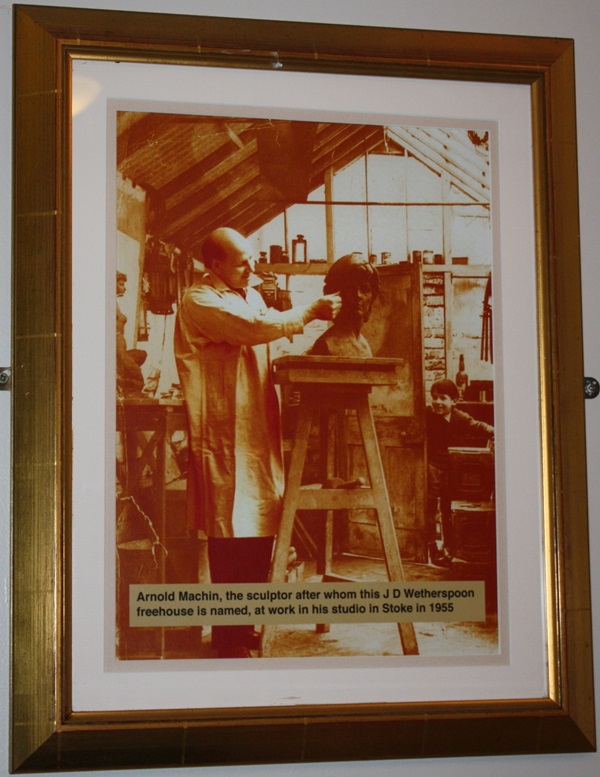
An illustration and text about Arnold Machin’s work.
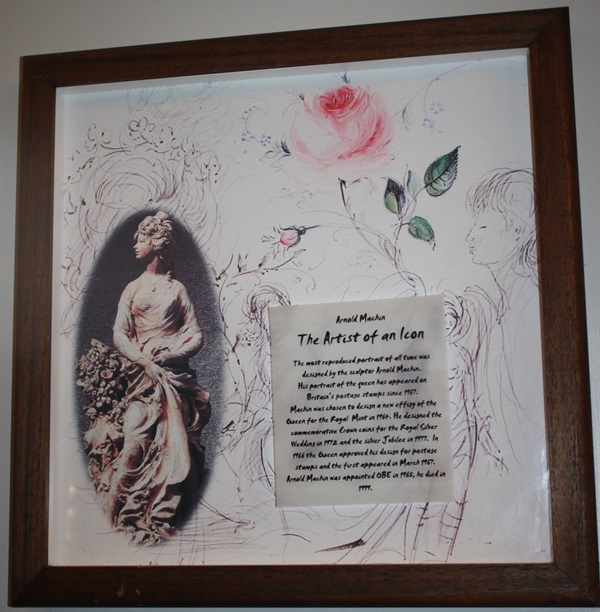
The text reads: The most reproduced portrait of all time was designed by the sculptor Arnold Machin. His portrait of the queen has appeared on Britain’s postage stamps since 1967. Machin was chosen to design a new effigy of the Queen for the Royal Mint in 1964. He designed the commemorative Crown coins for the Royal Silver Wedding in 1972 and the silver Jubilee in 1977. In 1966 the Queen approved his design for postage stamps and the first appeared in March 1967. Arnold Machin was appointed OBE in 1965, he died in 1999.
Photographs and text about Arnold Machin.
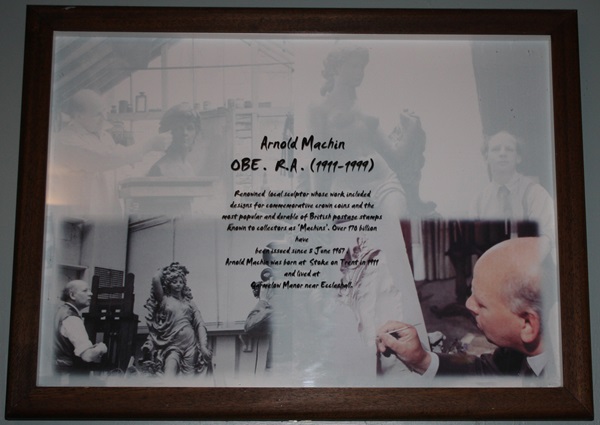
The text reads: Renowned local sculptor whose work included designs for commemorative crown coins and the most popular and durable of British postage stamps known to collectors as ‘Machins’. Over 170 billion have been issued since June 1967. Arnold Machin was born at Stoke on Trent in 1911 and lived at Garmelow Manor near Eccleshall.
Photographs, illustration and text about the Post Office.
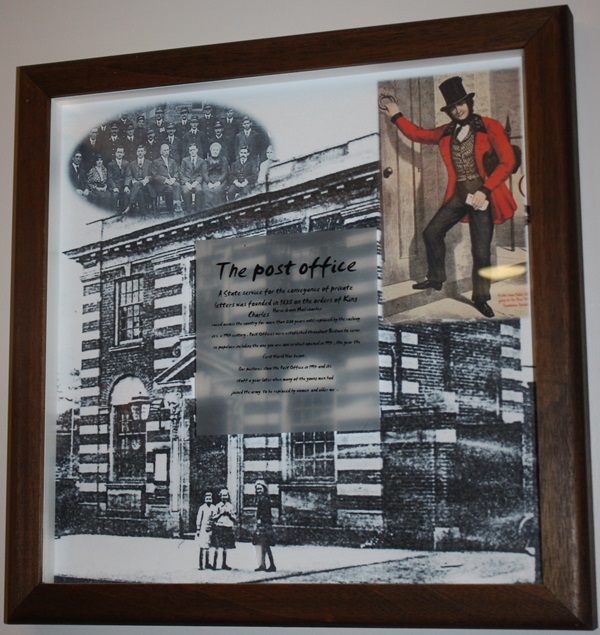
The text reads: A state service for the convergence of private letters was founded in 1635 on the orders of King Charles.
Horse drawn Mail coaches raced across the country for more than 200 years until replaced by the railway in 19th century. Post Offices were established throughout Britain to serve the populace including the one you are now in which opened in 1914, the year the First World War began.
Our pictures show the Post Office in 1914 and its staff a year later when many of the young men had joined the army to be replaced by women and older men.
Photographs and text about Vera Brittain.
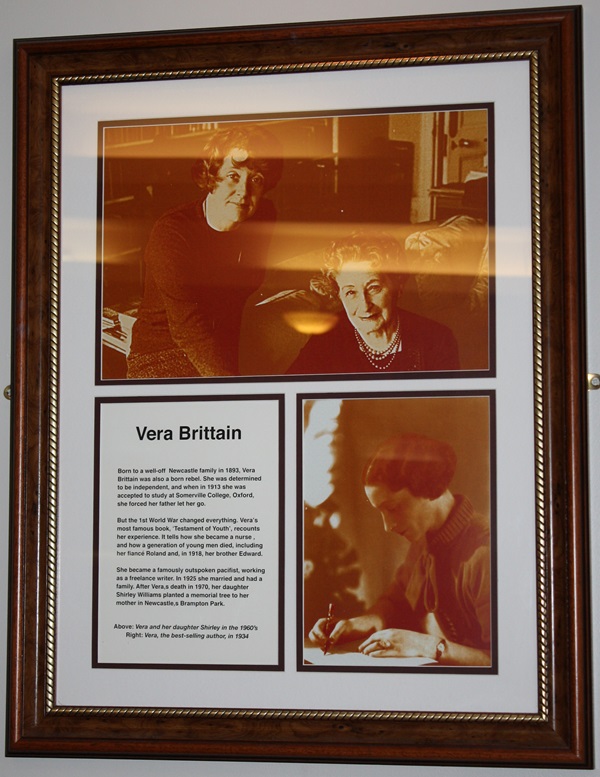
The text reads: Born to a well-off Newcastle family in 1893, Vera Brittain was also a born rebel. She was determined to be independent, and when in 1913 she was accepted to study at Somerville College, Oxford, she forced her father to let her go.
But the 1st World War changed everything. Vera’s most famous book, ‘Testament of Youth’, recounts her experience. It tells how she became a nurse, and how a generation of young men died, including her fiancé Roland and, in 1918, her brother Edward.
She became a famously outspoken pacifist, working as a freelance writer. In 1925 she married and had a family. After Vera’s death in 1970, her daughter Shirley Williams planted a memorial tree to her mother in Newcastle Brampton Park.
Above: Vera and her daughter Shirley in the 1960’s
Right: Vera, the best-selling author, 1934.
An illustration and text about Major General Thomas Harrison.

The text reads: Major General Thomas Harrison served as Mayor of Newcastle, and became a leading figure in the Commonwealth period, after the English Civil War ended with the execution of King Charles I. He fell out with Cromwell and was banished back to Newcastle. When the monarchy was restored in 1660 he was captured here and taken to London, where he was hung, drawn and quartered.
Illustrations and text about Philip Astley, 1742–1814.
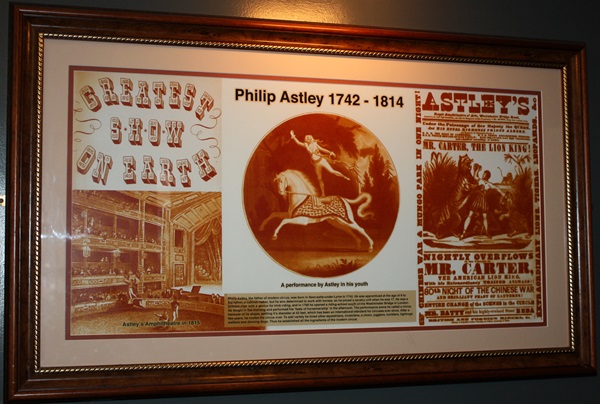
The text reads: Philip Astley, the father of modern circus, was born in Newcastle-under-Lyme in 1742. He was apprenticed at the age of 9 to his father, a cabinet maker, but he was determined to work with horses, so he joined a cavalry until when he was 17. He was a brilliant rider with a genius for trick riding, and in 1768 he opened a riding-school south of the Westminster Bridge in London. He taught in the morning and performed his ‘feats of horsemanship’ in the afternoon. The performance arena he called a circus because of its shape, setting its diameter at 42 feet, which has been an international standard for circuses ever since. After a few years, he roofed the circus over. To add variety he hired other equestrians, musicians, a clown, jugglers, tumblers, tightrope walkers and dancing dogs. Thus he established all the ingredients of the modern circus.
An illustration of the Mock Mayor-Making Ceremony at the Market Cross, beside the guildhall.
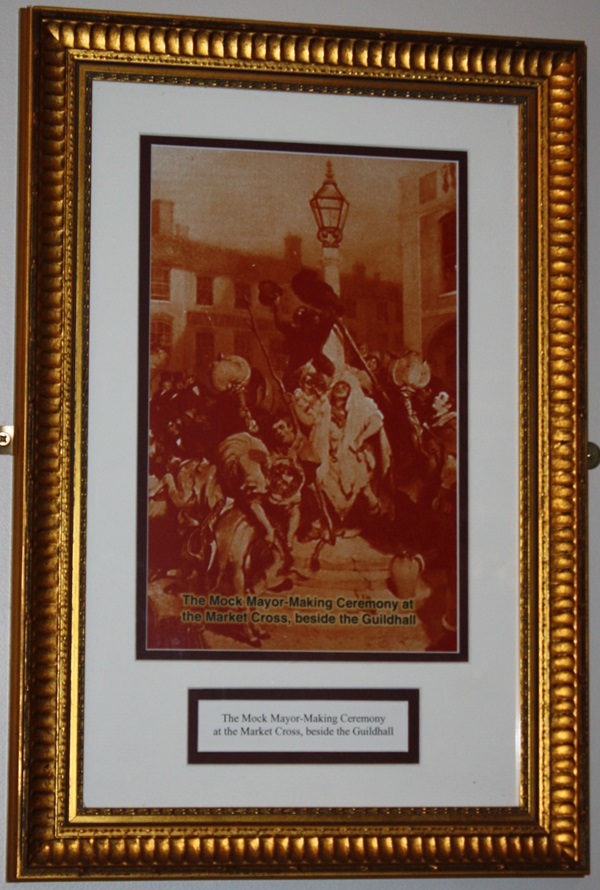
An illustration of a pen-ink drawing of the Ironmarket in 1800, by John Hulse.
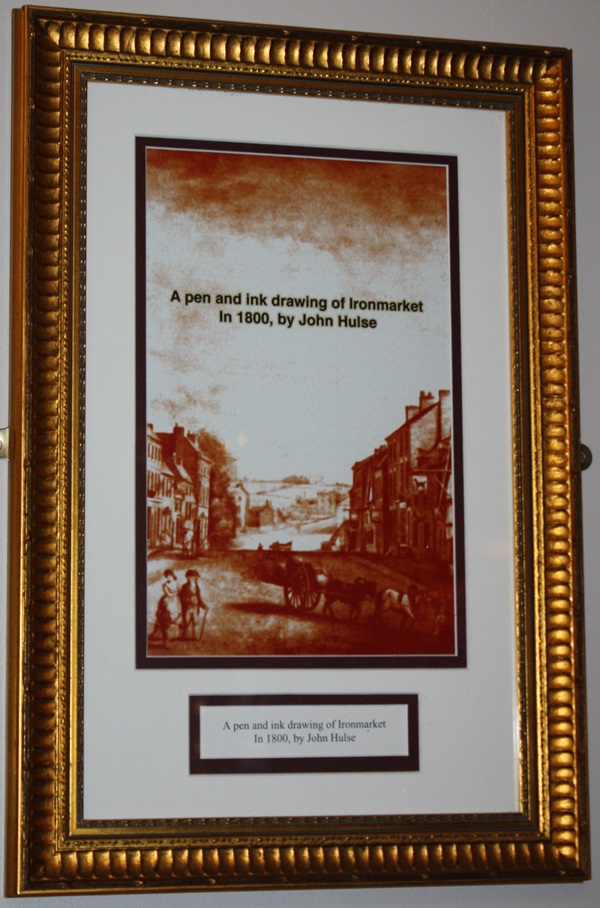
Photographs of the Ironmarket in the 1890’s & the east end of Ironmarket, c1930.
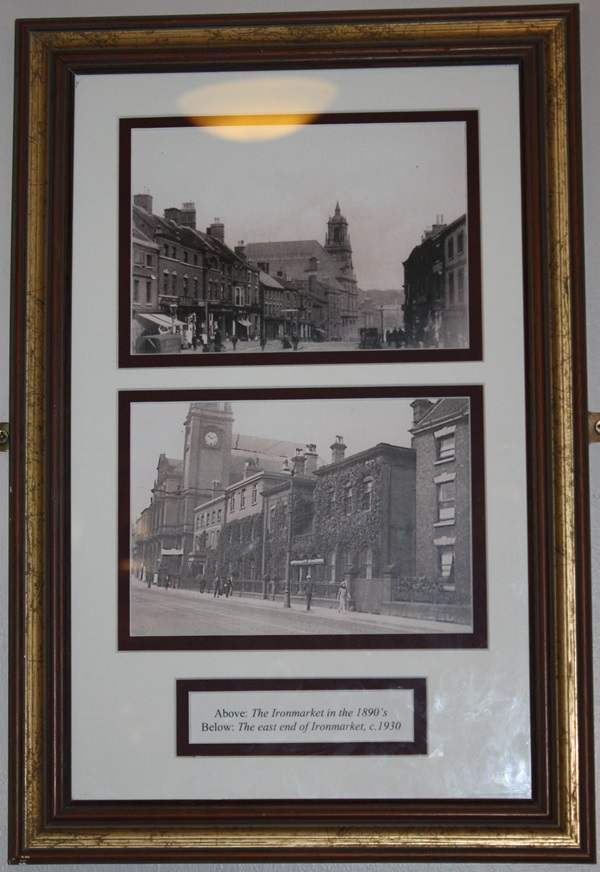
An illustration of the Newcastle Borough seal, depicting the castle and its pool; a photograph of the castle mound at the northwest end of Queen Elizabeth Gardens, in Silverdale Road.
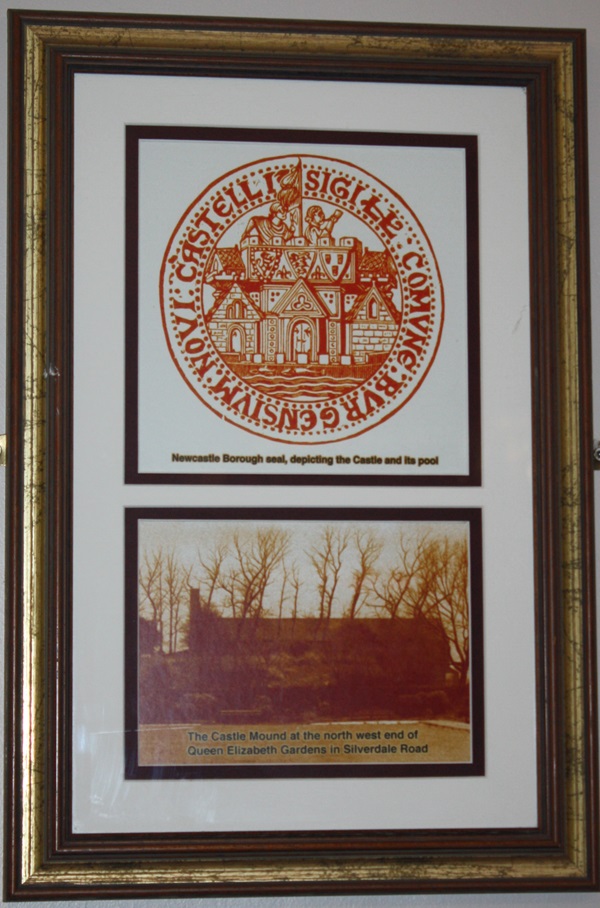
A photograph of the opening of the Electric Traction Company’s tram service in Ironmarket.
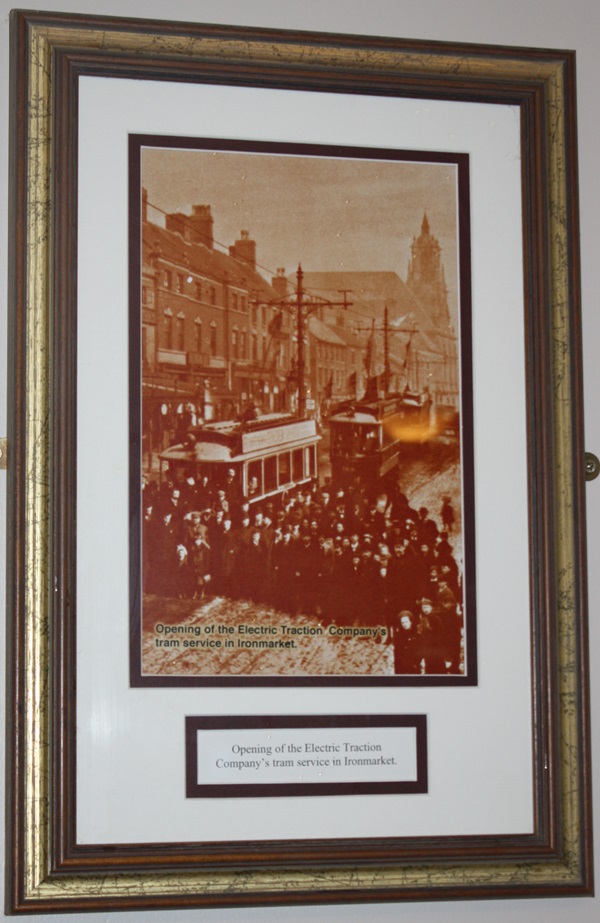
A silhouette of Philip Astley - the ‘Father of the Modern Circus’ was born in Newcastle in 1742.
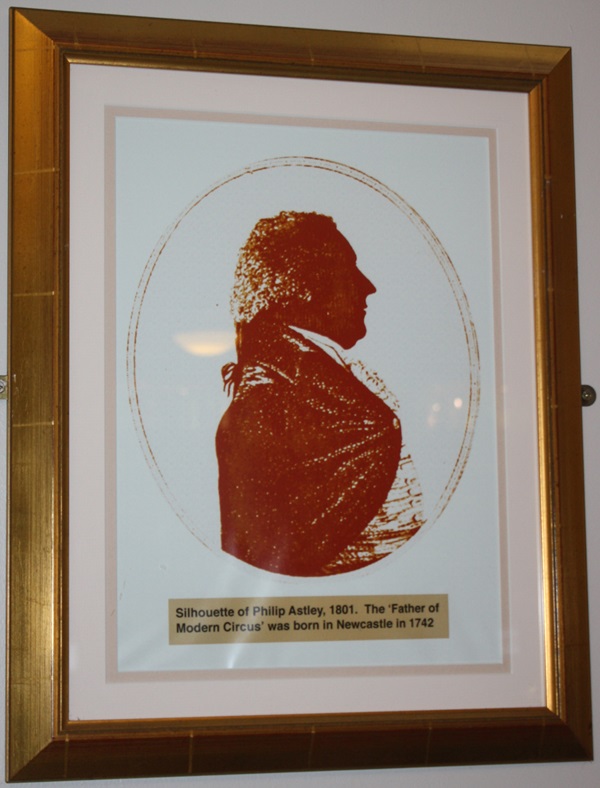
An illustration of Keele Hall, home of the Sneyd family and now at the heart of Keele University.
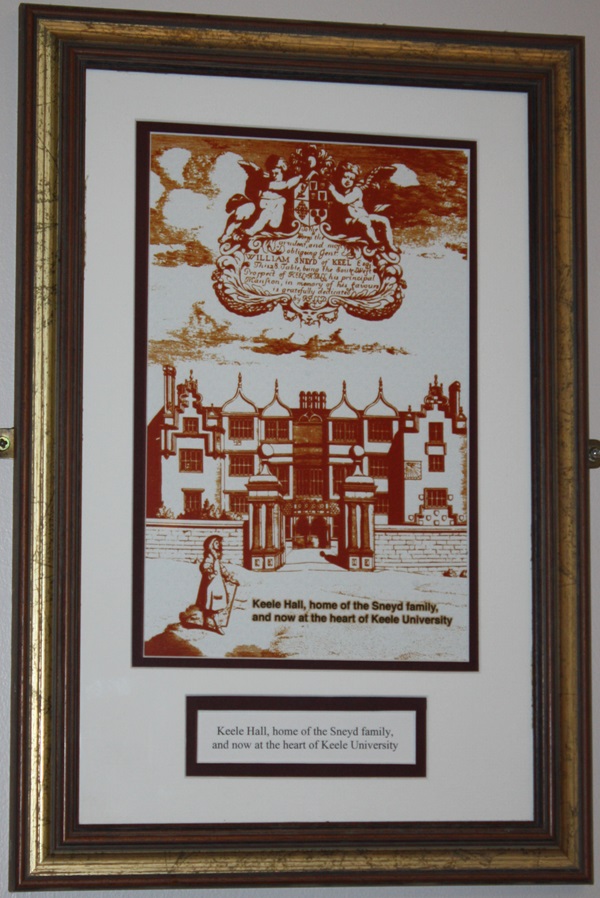
A print and text about Colonel Ralph Sneyd.
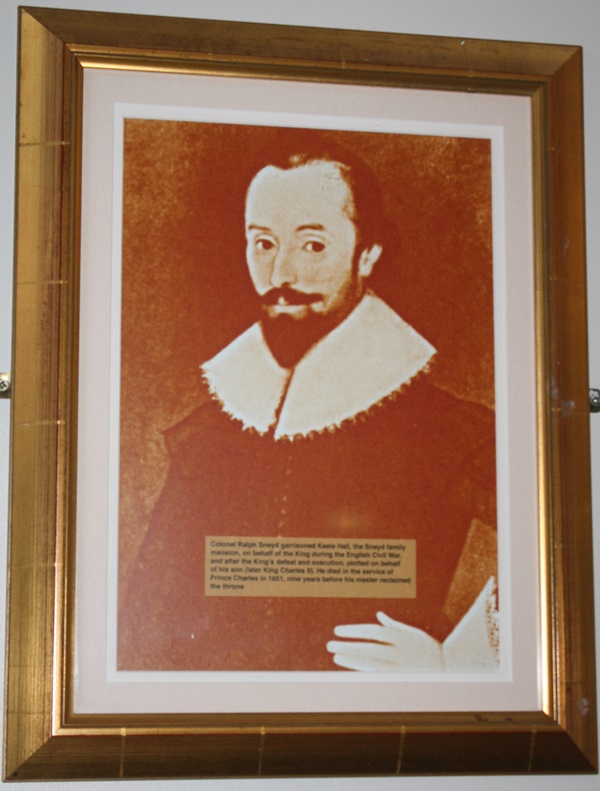
The text reads: Colonel Ralph Sneyd garrisoned Keele Hall, the Sneyd family mansion, on behalf of the King during the English Civil War, and after the King’s defeat and execution, plotted on behalf of his son (later King Charles II). He died in the service of Prince Charles in 1651, nine years before his master reclaimed the throne.
External photograph of the building – main entrance.
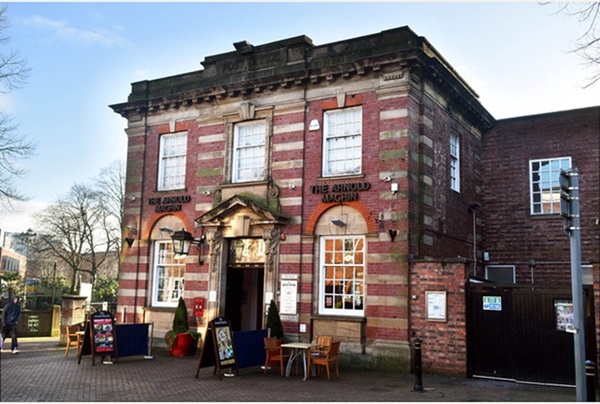
If you have information on the history of this pub, then we’d like you to share it with us. Please e-mail all information to: pubhistories@jdwetherspoon.co.uk